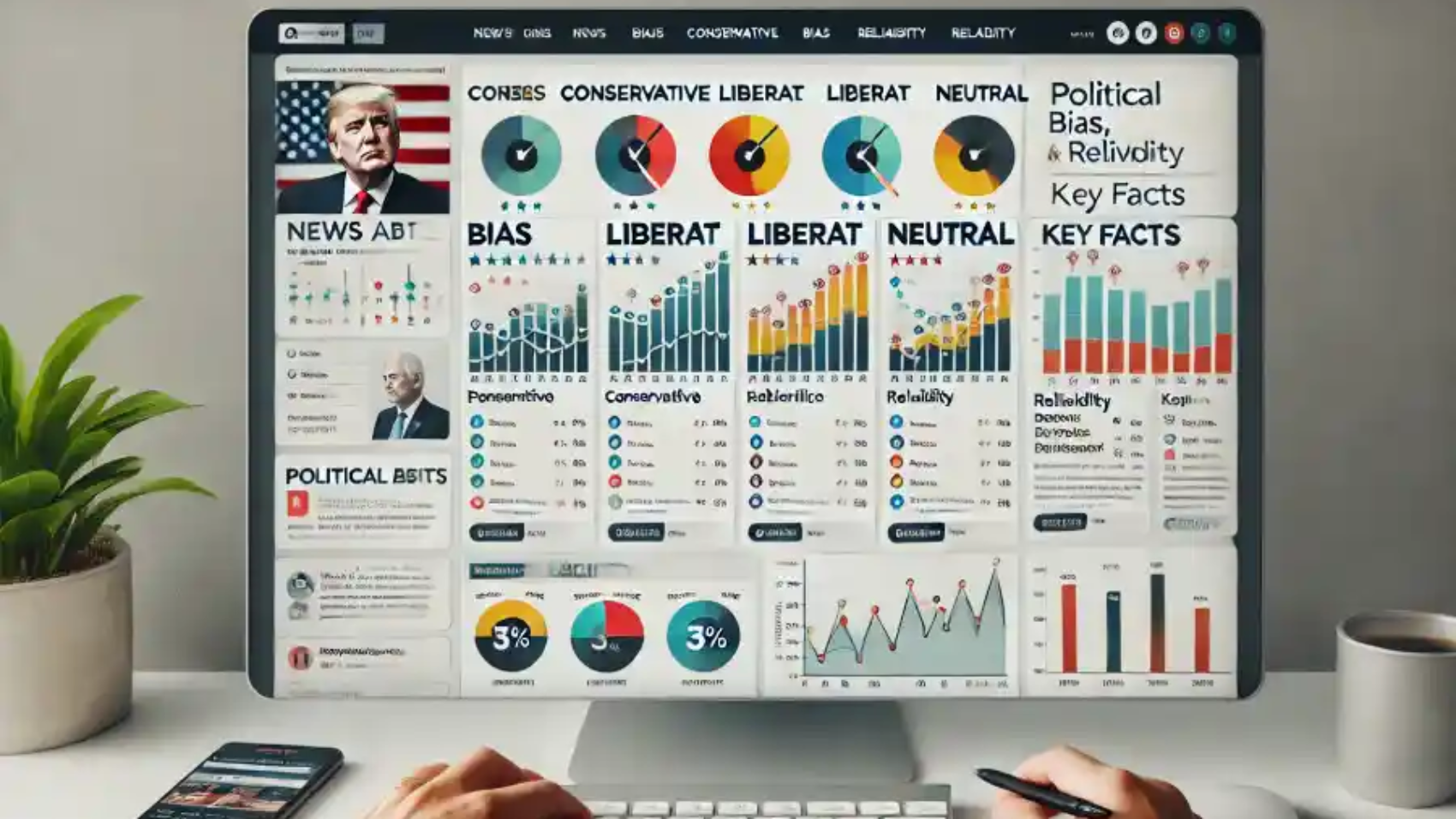Every day, we see news stories about politics, global events, and social issues. The media helps us understand what’s happening in the world, but sometimes the news we read or watch can be biased. This means the information may favor one side or viewpoint, making it harder for us to get the full picture. Media bias affects how stories are told and can shape how we think about important topics.
It’s important to be able to spot biased news so we can make well-informed decisions. Tools like Biasly’s news bias checker help readers understand if the news they’re consuming is fair and reliable.
In this article, we’ll explore what media bias is, why it matters, and how Biasly can help you identify it in the news.
What is Media Bias?
Media bias happens when a news outlet presents information in a way that supports one side or viewpoint over another. This can happen through the choice of stories, the language used, or the facts that are included or left out.
Here are some common types of media bias:
- Political Bias: News outlets may favor one political party or idea. For example, some media may lean more liberal or conservative, which can affect how they report the news.
- Selection Bias: This happens when news outlets choose to report some stories but ignore others. This can make certain issues seem more important than they really are.
- Confirmation Bias: This is when people seek out news that supports their existing beliefs. Media outlets often produce content that matches their audience’s views.
- Sensationalism: Some news outlets exaggerate or focus on dramatic stories to grab attention, even if the facts are not fully accurate or important.
When we don’t recognize bias, we might only get part of the story or develop opinions based on incomplete information.
Why is Media Literacy Important?
In today’s world, information spreads quickly, especially through social media. Unfortunately, not all of this information is accurate. Developing media literacy—the ability to critically analyze news and information—is more important than ever. Being media literate helps you spot biased news, question the sources, and seek out different perspectives.
Biasly’s news bias checker helps you become more media literate by showing you the bias and reliability of the news you read. This tool makes it easier to evaluate whether a news source is trustworthy and balanced.
Media Bias and Political News in the U.S.
In the United States, the media is often divided by political viewpoints. Some news outlets are known for being more liberal, like CNN or The New York Times, while others, like Fox News, lean more conservative. This creates “news silos,” where people only see stories that fit their political beliefs.
Several trends contribute to this:
- Partisan Media: Some news outlets target specific political groups, which can result in biased reporting.
- Social Media Algorithms: Social media platforms like Facebook and Twitter show you content based on your previous preferences, reinforcing your current beliefs.
- Echo Chambers: This is when people are surrounded by others who share the same views, limiting exposure to different perspectives.
- Misinformation: False information can spread quickly, especially on social media, making it hard to know what’s true.
Because of these trends, it’s important to use tools like Biasly’s news bias checker to get a clearer understanding of what’s happening and avoid falling into echo chambers.
How Biasly Helps Identify and Analyze Media Bias
Biasly uses technology to show where bias exists in news stories. By combining machine learning with human analysis, Biasly helps you evaluate the political bias and reliability of news outlets.
Here’s how it works:
- Political Bias: Biasly ranks news outlets on a scale from “Very Conservative” to “Very Liberal,” helping you see where a source stands politically.
- Reliability Scores: Biasly gives each news outlet a score based on how accurate and trustworthy they are. A higher score means the outlet is more reliable and less likely to produce misleading content.
- Content Analysis: Biasly looks at the language and tone in news articles to show where bias may exist. This helps you understand if the story is presented fairly.
- Cross-Referencing: Biasly encourages you to read stories from multiple outlets to get a balanced view of the news. By comparing different sources, you can see how bias might shape the reporting of the same event.
How Biasly Shapes Public Perception
The news we consume affects how we think about politics, social issues, and the world around us. That’s why it’s important to have tools like Biasly to help us spot bias and get a full understanding of events.
Biasly helps you:
- Recognize Bias: By using Biasly, you can easily see if a news outlet leans left or right, helping you better understand how the news is framed.
- Get a Balanced View: Biasly encourages you to read from different sources so you can get multiple perspectives on a topic.
- Improve Media Literacy: Biasly gives you the tools to critically analyze news, making it easier to spot bias and avoid misinformation.
- Support Better Journalism: When people are aware of bias, news outlets are encouraged to be more accurate and fair in their reporting.
Conclusion
Media bias is everywhere, but with tools like Biasly’s news bias checker, you can better understand the news you’re reading. Biasly helps you identify bias, evaluate the reliability of news outlets, and become a more informed reader.
In today’s polarized world, it’s important to look beyond the headlines and make sure you’re getting the full story. By improving your media literacy and using Biasly, you can make more informed decisions and see the bigger picture.
Start analyzing the news with Biasly’s News Bias Checker today to ensure you’re getting the facts, not just opinions!

